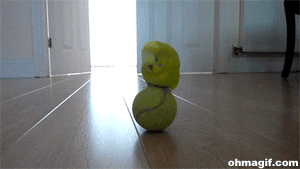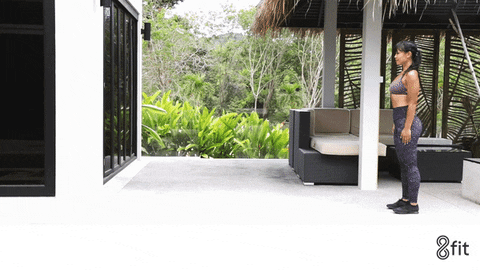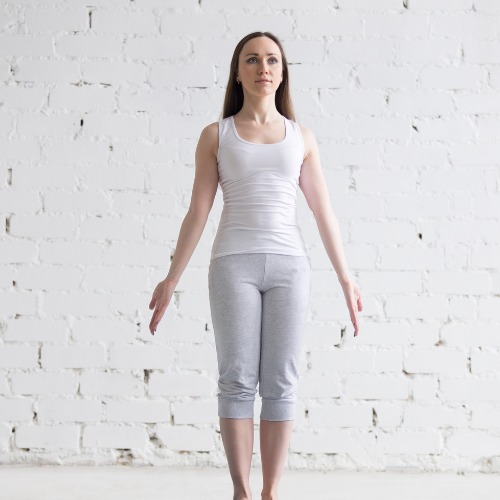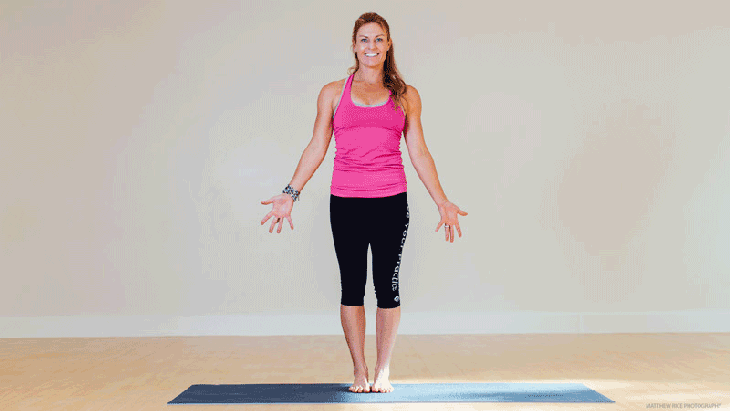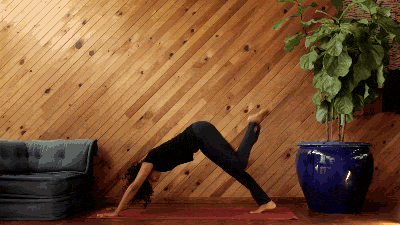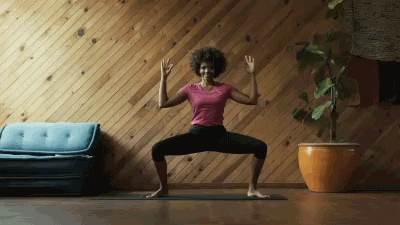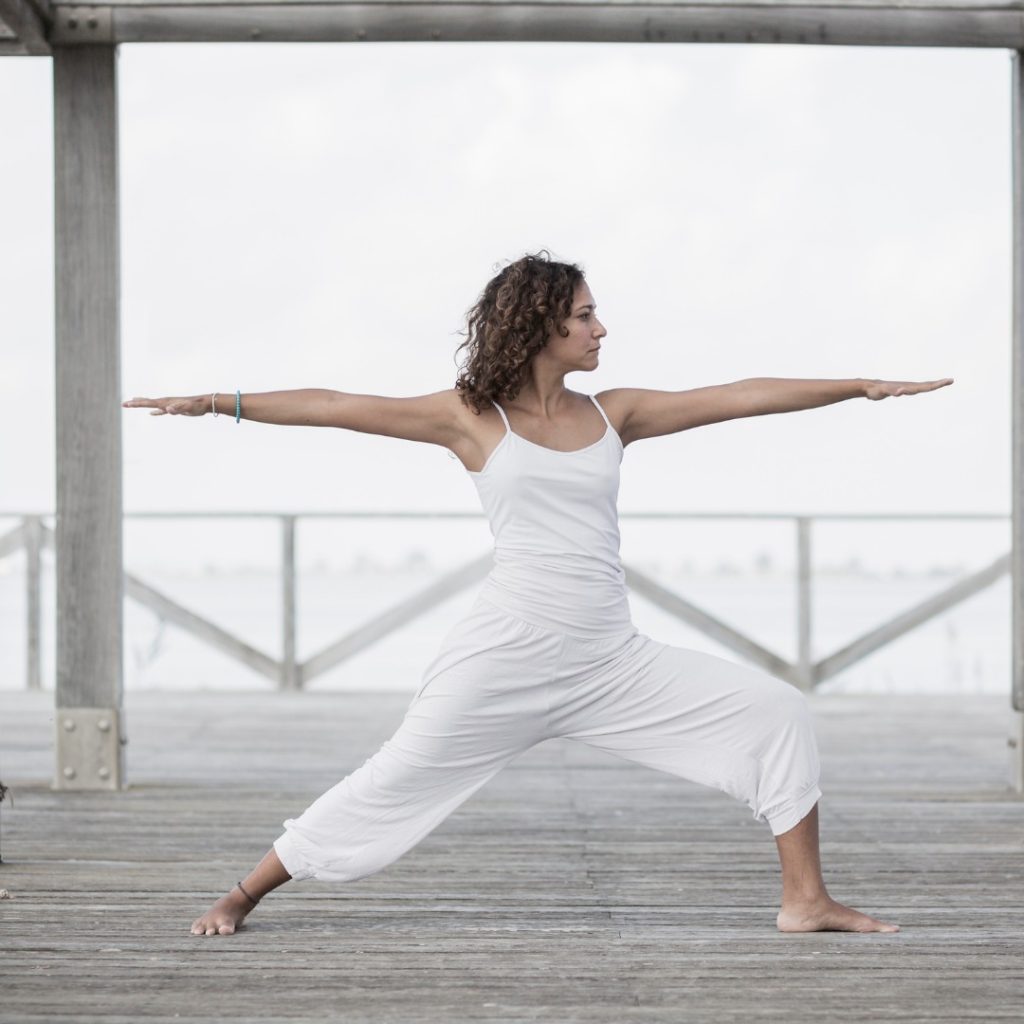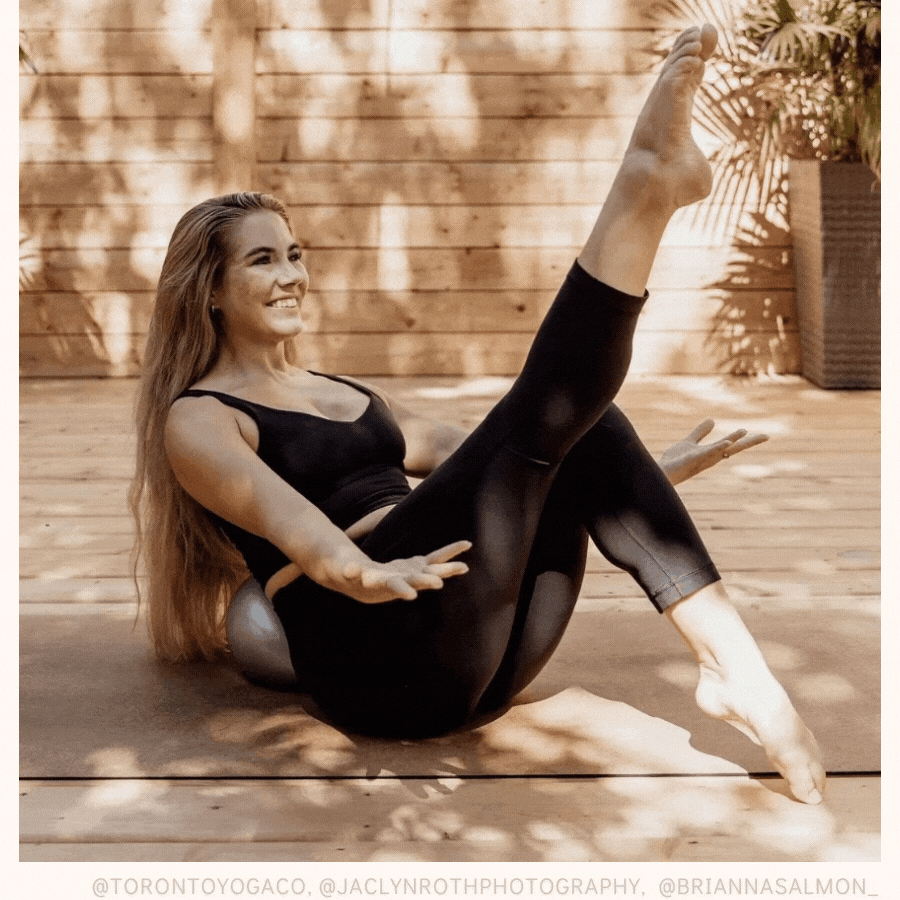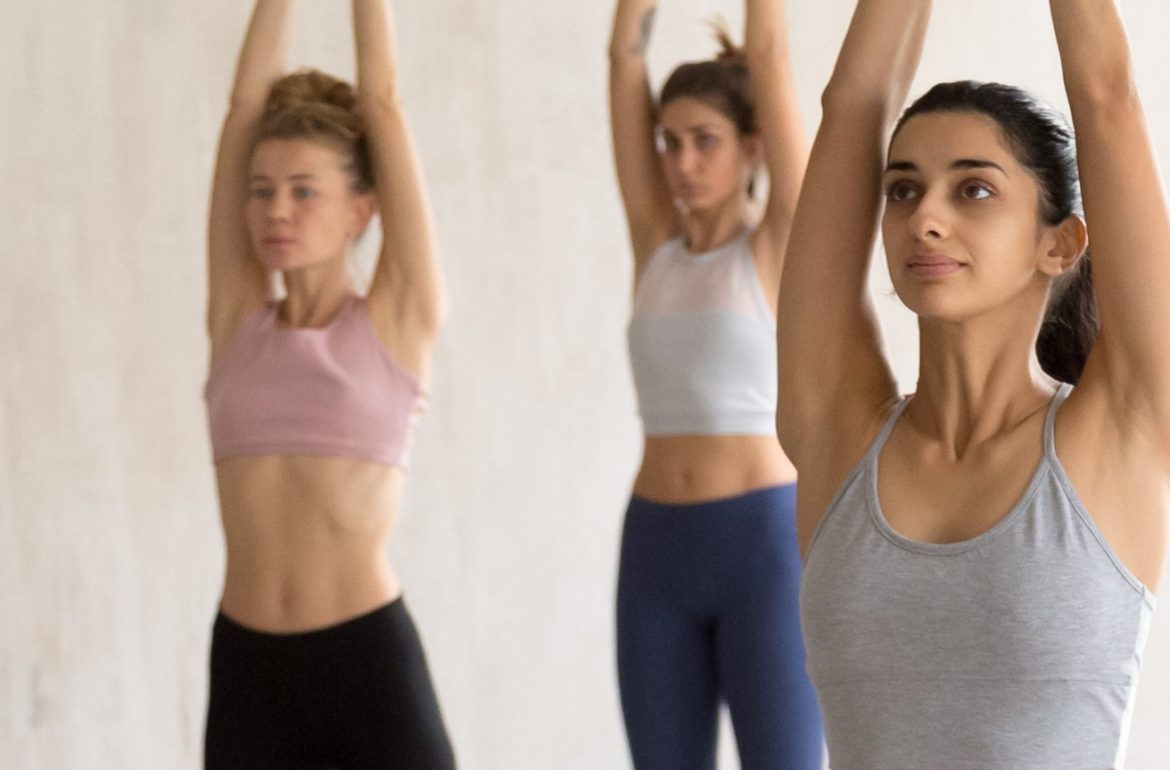
10 Yoga Poses For Balance & How To Practice Them
What is balance and why is it important?
Balance is a state of steadiness that enhances our mobility, alignment, stability, strength, and posture. According to Lifehacker, “good posture helps relieve and prevent pain, improves your attitude, and also positively affects your brain”. When you have attained balance, you feel more flexible and active as your body lengthens and strengthens, keeping you upright even in adverse circumstances. For example, have you ever tripped and fell while catching a bus? Or, did you ever feel that you are losing balance while enjoying athletic activities or adventure sports? Well, it may be because your body lacks the balance that we are talking about here. Life is all about making the most of each moment! We are not saying that everybody should indulge in adventure sports – but balance is also crucial for day-to-day activities, like carrying grocery bags, riding a bike, or driving.
Oftentimes, we tend to overuse certain muscles in our body which may lead to imbalances due to our weight being unevenly distributed. Actions like, bending to tie our shoes, twisting to get a bar of soap in the shower, lifting weights, or carrying a baby require proper balance. However, our preference to use specific parts of the body for the job creates a shift in our body weight and can become the main cause of imbalance. If we don’t address this, it can be a hard habit to correct down the road and can result in tension and stress, mobility issues, and instability. No thanks!
To understand balance, we have to understand that balance isn’t just about being stable in one position like a yoga pose. Dynamic balance – which is achieved when your body is in balance during movement or transitions, like walking or transitioning between yoga poses, is also very vital to maintaining a sense of balance.
Most of the functions that our bodies perform regularly are based on the cohesive performance of all our working parts. When we are in balance we have a better sense of awareness, improved posture, and are ready to take on life’s tasks with more confidence.
Now let’s focus on how to enhance our balance. Yes, you got it! Yoga can help, we did a deep dive and discovered some yoga poses for balance that will help you find your center of gravity, so to speak – scroll on to learn more.
How Yoga can help achieve balance
Practicing yoga poses for balance on a regular basis can help align the body in the right posture and will help in maintaining alignment even at times of huge physical labor, greatly reducing your risk of injury. Let’s not forget the goal here is to live our best life, so we want to practice prevention here people! Before we start practicing any yoga poses for balance we want to remember three things:
-
Breath
Focus on your breath. Remember to relax the muscles in your jaw, neck, and diaphragm, this will improve your focus and help in maintaining an overall sense of balance in any pose.
-
Weight distribution
It’s very important to remember that if we want to improve our balance we need to make sure our weight is evenly distributed, particularly when we are on our feet. This is especially important for standing poses because a majority of the daily activities we do are standing up. Have you ever looked at your shoes and noticed how worn out they are in some spots? Or maybe one sole is more beat up than the other? Use this as your guideline for finding your center of gravity when walking or in your standing yoga poses for balance. AZ Central explains “Your spine should be aligned over your pelvis, with your weight evenly distributed between your feet. You should feel even pressure on the balls of your big toes, little toes, and heels. This is the tripod of your foot. If you feel more pressure on one of these points, you are not in alignment. Relax your toes and knees and adjust your weight so the tripods of both feet feel equal pressure.”
-
Transitions
While we are going to start with the basics and take a look at mostly static yoga poses for balance, you want to remember the importance of dynamic balance as well, we touched on this a bit earlier – the key to building balance is finding steadiness in your movement. We do this by developing strength in the yoga poses we talk about below.
Let’s take a look at our yoga poses for balance now, these will help you with your focus, movement, agility, and coordination.
10 Yoga Poses For Balance
1. Forward lunge
You should lunge forward with hands on the hips and move with the opposite leg and arms forward, keeping the legs at 90 degrees. Use the inner thighs to lift the body when you move. It helps distribute your body weight evenly through all four parts and improves posture.
2. Mountain pose
Also known as Tadasana, this pose helps align the muscles in your body and activate them for strenuous activities. Keep your feet parallel and spread your toes to activate the muscles in your lower legs. Contract the muscles on your lower abdomen and those on your upper abdomen, taking turns, to strengthen your pelvis. Draw in the bones in your upper arms and lengthen your waist.
3. Chair pose
Here, you should begin with the mountain pose and then stretch upwards by raising your hands and spreading your fingers. Inhale as you do so. Now, exhale and sit down as if sitting on a chair. Repeat the process a few times before you rest. It helps strengthen your legs, back, and shoulders, especially in the sitting pose. Also, it helps you practice patience due to excessive working of your thighs.
4. Tree pose
Again, begin with the mountain pose and then slowly lift your right leg and place the foot a little above your left knee. Do not place it on the left knee to protect your knee joint. Fold your hands in a ‘Namaste’ and hold the position for 5-10 breaths (inhale +exhale). Now, switch sides and repeat the pose. This again helps in alignment and directly works to improve balance. You may experience some imbalance at first, but with time, you will be a pro in maintaining the same. Yoga Journal suggests turning the last 3 yoga poses for balance into a flow for a more dynamic balancing exercise practice.
5. Downward-facing dog
Kneel on all fours and with your arms shoulder-width apart and your knees at a 90 degree angle. Lift your hips and lengthen your spine as you push back into downward dog. Do not forget to spread your fingers wide to help balance your body in that raised position. This pose helps your balance by strengthening your spine and hamstrings, as well as opening up your shoulders and legs. Once you’ve mastered this you can try lifting one leg at a time.
6. Goddess Pose
Goddess pose, also known as Sirsasana is highly beneficial to restore and maintain body balance. Step your feet apart and squat down so that your knees align at a 45 degree angle over your heels, with your toes facing out in opposite directions. Remember to keep your tailbone tucked and your belly button pulled inwards.
7. Warrior II
Keep your feet about 3-4 feet apart and move your right foot inwards. The left foot should be at 90 degrees, lining up the left heel with the right foot. Bend your left knee too at 90 degrees keeping it in line with the second toe. Now, stretch your straight, back leg and bring your arms to a T position at the height of your shoulder, while you inhale. Spread the fingers and keep the palms facing down. Relax and exhale, while sinking deeper into the stretch. This yoga pose can help calm your mind and improve your focus for better balance. It also increases stability and strengthens your limbs.
8. Bound angle pose
Sit down, fold your knees and open them out on the side. Make your feet face each other and touch. Place your fingertips on the floor behind you and straighten up your spice. Your inner thighs and groin will get a good stretch while restoring balance.
9. The Corpse pose
Also known as savasana, you’ll often find this yoga pose at the end of every yoga practice, to decompress and realign. Lie down on the mat, face up and your legs spread like a starfish. Do not spread much though. Keep your arms on the sides with palms facing up and relax. This pose enhances the benefits of a strenuous exercise session by restoring muscular strength.
10. The Bow
A bit more of an advanced pose. Lie on the mat, facedown, and move your shoulder blades back, while lifting your legs from the knees and bending them back to align with the hip. Raise your upper body to grab your ankles and hold on to them for a while. Exhale slowly as you restore your initial position and place your legs back to where they were.
This pose helps stretch your shoulders and chest and improve your breath during concentration. It’s also a good massage for your abdominal organs.
Balance Training & Equipment
-
BODYBALANCE™
The body balance therapy is essentially a series of scientifically-based Tai Chi, Pilates, and Yoga moves to give you an overwhelming sense of peace and calm. These classes help strengthen your body and improve flexibility for starters, besides creating motivation to overcome day-to-day mental and physical challenges, they also help release stress and improve the release of endorphins in the body, thus making you feel positive and happy. A lot of other benefits can be attributed to the Bodybalance fitness therapy, like posture improvement, weight loss, muscle toning, and more. You can expect toned hips, lower abdomen, and a great structure overall after practicing these exercises for a sufficient duration. The changes will be notable, and you may also experience a less-stressed mind with greater clarity to focus on your regular activities.
-
Pay attention to those feet of yours!
A lot of people tend to neglect their feet and brush foot health to the side. Our feet are very similar to our hands and have a lot of nerves and functionality in them. Balance is enhanced when we have a good understanding of how we hold our weight in our hands and our feet, e.g. using toe separators, going barefoot as often as possible to keep the muscles of the feet strong and flexible, and massaging your feet to keep the awareness alive.
-
Bosu Ball – taking your balance to the next level!
These balls (or rather half balls) are a great place to put your balance to the test. Practicing some the balance yoga poses we mentioned above on a Bosu ball is a great way to improve your skill. Doing other activities like weight lifting or squats on this platform is an amazing way to achieve inner balance and a solid core.
-
Cork Yoga Mat – setting the foundation.
Having the right tools to practice yoga can make all the difference. When practicing on the wrong mat, rather than paying attention to our body and our balance we may find ourselves trying not to slip or making sure we are staying on the mat (tall people problems). By using a cork surface you ensure less slipping and sliding and can stand steady in your poses and transitions focusing on nothing but your balance.
-
Balance Board – working on your balance at work!
This board is a great addition to your standing desk (assuming you have one!). It is also an amazing alternative to your couch! Dedicate one episode of the new series you’re obsessed with and watch it while on your new bamboo balance board. This is a great way to easily add balance into a busy life.
-
Upright GO – using technology to improve your posture.
This nifty gadget is worn on your back and is calibrated to your ideal posture. Based on the tasks you are doing throughout the day you get vibrations from the device when you are leaning forward or are hunched over. You can get reminders and participate in daily training sessions. All the information is recorded in an app on your phone so you can review your daily progress. Posture is a big part of balance and maintaining an appropriate posture has a huge impact that transcends balance and improves several facets of your life.
Conclusion
You can practice several other yoga poses to help improve body balance. But you may need the first hand advice and training of an experienced yoga instructor to prevent accidents. Get in touch with one to enhance mobility and balance in your body, helping you stay fit and energetic at all times.



